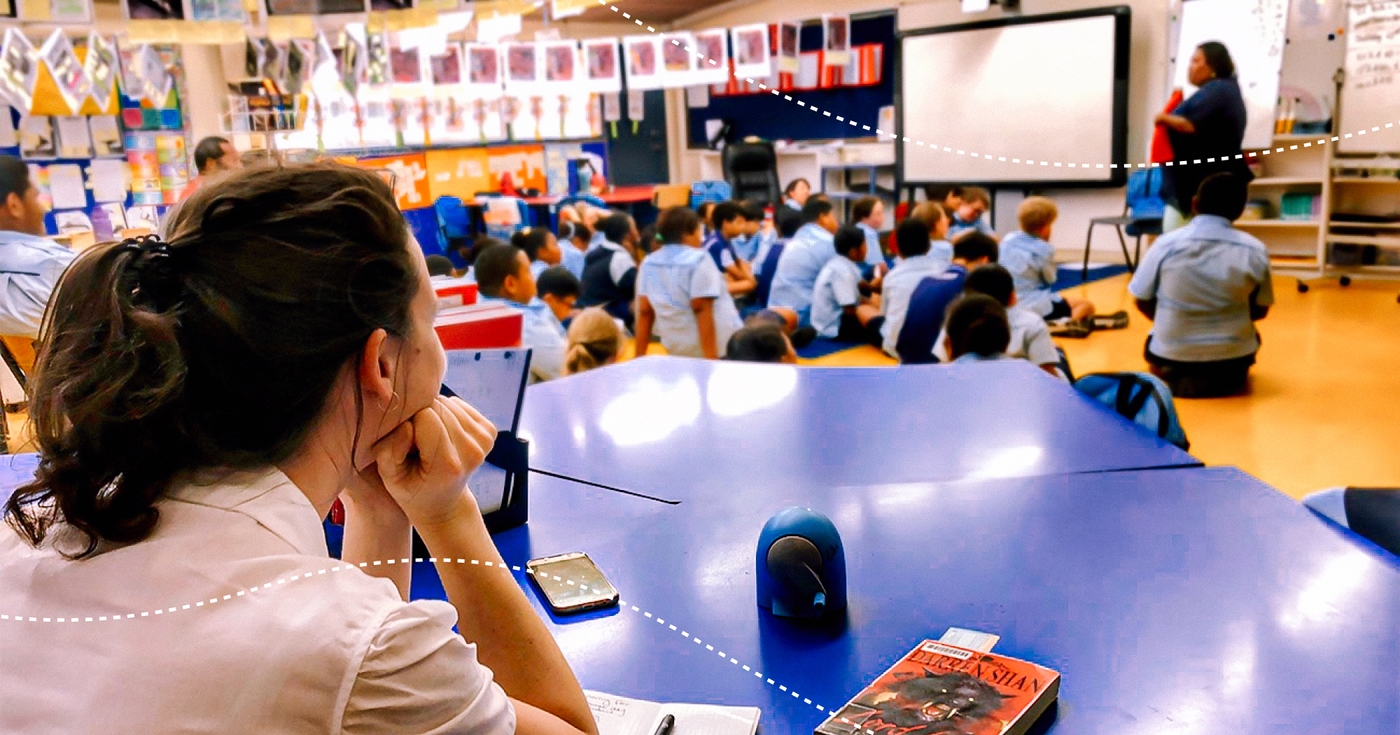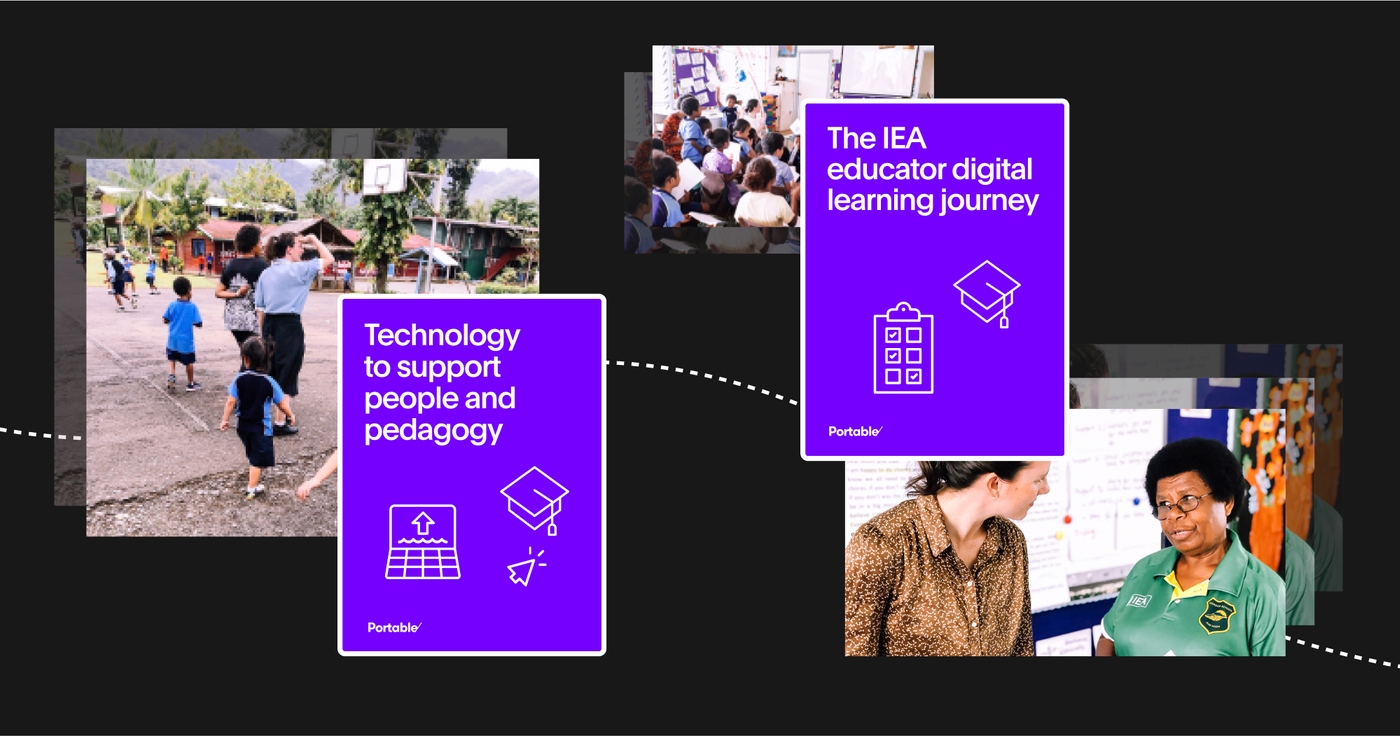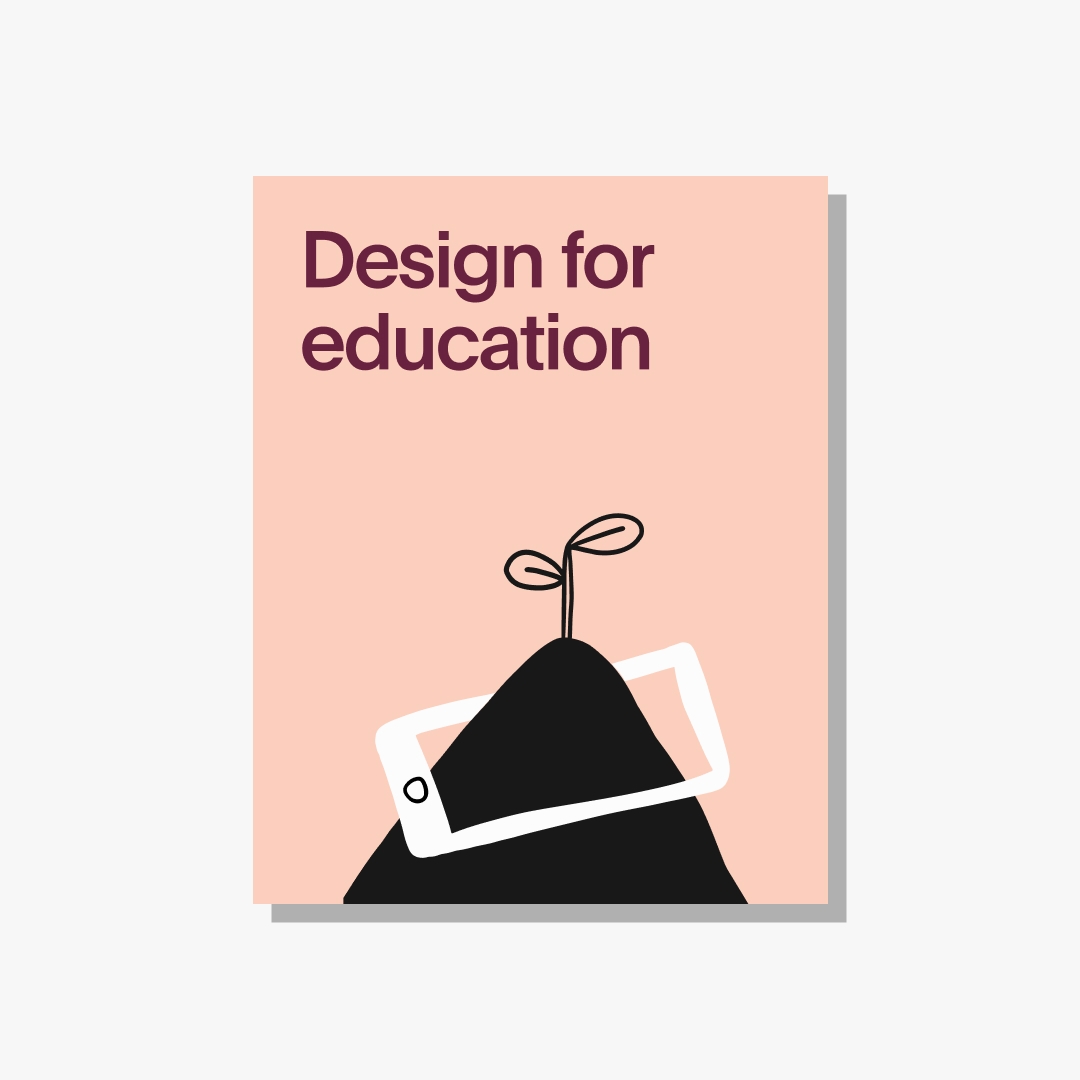One of our core impact areas at Portable is the use of design thinking to inform approaches in the education sector. We have previously worked with clients such as Monash University, the Department of Education (NSW), and the University of Melbourne’s Goulburn Valley Regional Training Hub to envisage new tools and platforms to support learning and student engagement. We have also completed a research and development project which involved considering the user experience of schools in Australia and how to equip students for the changing world of the future. We summarised our findings in our report ‘Designing for Education.’
Last year, our work took us further afield to Papua New Guinea, where members of our design strategy and development team at Portable worked alongside the staff and students of the International Education Agency of Papua New Guinea (the IEA). The IEA employs more than 300 teachers and more than 700 ancillary and support staff. The IEA is a not-for-profit business owned by the schools it operates. We kicked off our research with them by working to understand current attitudes and behaviours regarding educational technologies in the organisation. We then set about establishing a baseline of the IEA’s current state of adoption, forming an understanding of what current best practice in the education sector looks like, crafting a vision for the use of educational technologies and associated teacher standards for the organisation and creating a roadmap with the IEA for how the organisation might reach its technology and education goals.
The imminent completion of the Coral Sea Cable project is set to result in a drastic capability and capacity uplift for internet connectivity in Papua New Guinea. The IEA sought to be proactive in taking advantage of the soon to arrive increased internet speeds and connectivity. They engaged Portable to provide research and advice due to our extensive work in education projects, combined with our passion for delivering meaningful change with human-centred technologies.
A human-centred approach
Instead of charging in with our own assumptions of what the IEA required and presenting ourselves as outsider-experts, we took an approach that placed teachers and students at the centre of our research. Their insights are what lead us to our recommendations.
The work benefited from the strengths of Portable's human-centred approach being used in the context of Papua New Guinea. Our focus on empathy, humility and collaboration was well-received by people throughout the organisation who were often unaccustomed to being treated as the experts in their own experiences.
The resulting deliverables provided meaningful, student-centred approaches to the adoption of technology in education. The series of evidence-based recommendations we produced provided the IEA’s leadership team with a number of clear decisions to be made in order to chart the course ahead.
With the Coral Sea Cable completion occurring as the project concluded, we have provided the IEA with the timely guidance they need to successfully establish a long-term, strategic approach to transformed learning experiences with technology.
Activities
Baseline survey
We began by partnering with Greenshoot Consulting to craft a baseline survey focused on gaining an understanding of attitudes towards and usage of technology throughout the IEA’s school ecosystem. Over 150 teachers, 500 students and 50 administrative/management staff responded to the first distribution of these surveys. The team at Greenshoot then analysed the survey data as part of our research and insights development.
Literature review
Alongside this, we produced a literature review on current best practices for the application of educational technologies. These deliverables were excellent preparation for our in-country visits and informed the direction of our interviews and workshops.
In-country visits
Next, over two in-country visits, we conducted a series of in-context interviews, observational activities and workshops and classroom activities with teachers and students. We also had the pleasure of attending a conference held by one of the schools, where we were able to meet and talk with teachers from all over the country.

One of the team’s highlights on this project was immersing themselves in the daily life of the IEA’s schools and conducting live classroom testing of educational uses of technology. Students:
- had a Mystery Skype with Portable’s colleagues back in Melbourne where they played a guessing game
- used Toontastic to animate their creative writing pieces
- used Google Science Journal to conduct experiments on earthquake-resistant structures - highly relevant in the PNG context.
Out of these visits, we crafted several documents for the IEA containing insights and guidance on a way forward with technology.
Deliverables
A vision of digitally enhanced, contemporary learning experiences across various student age levels
This was underpinned by our initial literature review findings, conversations and interviews with IEA staff, classroom and office observations, and activities with students. This vision document was conceived primarily as a tool for educators. Each example of a digitally enhanced contemporary learning environment focused primarily on the experience of students and their teachers. We included strategies for improving learning outcomes, details on how the learning experience is being enhanced or transformed with technology, and considerations for how students and teachers are thinking. The contents and concepts in this vision were tested and refined directly with IEA teachers, students and administrators during our second in-country visit.
A digital learning journey for IEA educators designed to empower teachers to deliver these new learning environments
The digital learning journeys document was created with IEA educators across PNG and tested and refined in IEA schools in Port Moresby and Alotau. It draws from pre-existing teacher digital literacy, fluency and pedagogy standards already used around the world. We took care to adapt the existing tools for teachers to the IEA’s particular use case. Key contextual adaptations included simplification of language for our ESL audience, and the accompanying series of self-assessments to help teachers and professional development personnel to map their progress and determine relevant next steps for growth.
A comprehensive report providing a set of recommendations accompanied by implementation guidance
This report provided detail on a number of aspects that we identified to be central to a successful transformation of the learning experiences of the IEA’s staff, students and communities with technology. The report provided comprehensive recommendations regarding the people, infrastructure, platforms, policies and strategies needed in IEA’s educational ecosystem, and outlined a roadmap for implementation of the various strategies.
In order to deliver current, best-practice recommendations in educational technologies, Portable sought a collaboration with key contributors from CompNow, an Australian-owned information technology service provider established in Melbourne.

Throughout our research, some important insights arose that informed our approach to the advice we provided to the IEA. As with any student-centred initiatives in the education sector, it is crucial to ensure that an institution’s focus on people, pedagogy and processes is prioritised over any individual technological interventions. We also discovered the need to ensure that the advice we provided empowered the IEA to properly balance the tension between centralised control and autonomous innovation; a constant challenge we have noticed in the broader education sector, discussed recently in our Education Webinar.
Through this project, Portable’s researchers built upon their understandings of core educational technology frameworks and concepts, including:
- John Hattie's influences on student achievement,
- Bloom's Taxonomy,
- Dr Ruben Puentedura’s SAMR (Substitution, Augmentation, Modification and Redefinition) model,
- Mishra and Koehler’s TPCK (Technology, Pedagogy, Content and Knowledge) model, and
- Parsons, Thomas and Wishart’s mobile affordances in the digital classroom.
Outcomes and benefits
A replicable baseline study
The baseline study provided insights into the current levels of use of educational and administrative technologies in IEA schools, teachers’ attitudes towards technologies, and limitations to existing infrastructure. This study can be used by the IEA to track their progress towards their goals of the adoption and use of technologies throughout their ecosystem.
A stand-alone literature review
The literature review was written for a wide variety of audiences, that provides a rationale for the use of educational technologies and practical implications and possibilities for IEA in PNG. This review had the twofold benefits of: informing Portable’s ongoing research approaches and prototypes, and serving as communication about the project to the people it is likely to impact.
A vision for teachers of what a digitally enhanced contemporary classroom could look like for Year 2, Year 6, Year 8 and Year 12 students
We took a narrative approach to describe eight unique technology-enhanced classroom scenarios. Alongside these, we crafted a ‘Teaching with Technology’ canvas and workshop guide to support teachers in iterating on and contextualising these examples and other examples they may come across when searching online for lesson inspiration. We tested the canvas and several of these scenarios with teachers and in classrooms and received excellent feedback that teachers found them very useful.
A set of teacher standards specific to digital literacy and fluency
These teacher standards were accompanied by self-assessment and learning activities corresponding to the self-identified competency levels. These tools will benefit teachers in the IEA schools by guiding them for their technical skills-based professional development.
A comprehensive report
This report was written for the the IEA Board and Management Team, it outlined key risks and issues, and provided a range of key recommendations to fulfil the vision including indicative timelines, resources and a range of options. The potential benefits from this report are wide-ranging and will depend on how the leadership within the IEA decides to action the recommendations contained within it. Many opportunities for growth and increased leveraging of technologies in the school systems have been highlighted.
Download our education report
